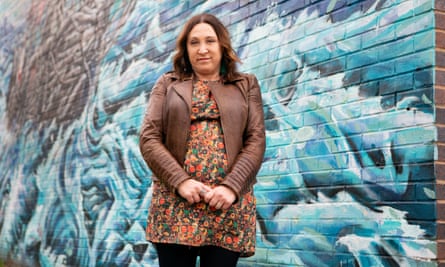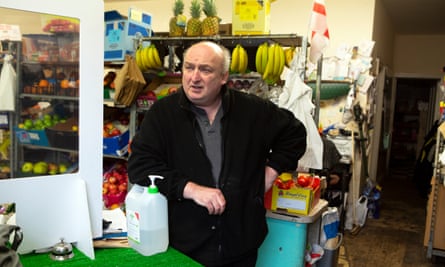Homebuyers are scrambling for houses in Britain’s latest property hotspot – on the tip of the Wirral peninsula.
The Merseyside town of Wallasey has over the past year recorded a bigger rise in asking prices than any town or city in Britain, according to the listings site Rightmove. And it’s family homes with gardens – a popular choice during lockdown – that have become must-have assets.
This has led to a four-bedroom semi-detached house on a quiet street in the Wallasey suburb of New Brighton becoming the unlikely subject of a bidding war.
“People were fighting for it,” said Russ Smith of estate agency Bakewell & Horner. “Everyone’s fighting for every property that comes live. There is high demand and less supply.”
Prices are going up partly because there is a bit of a buzz around and people see things happeningDaniel Davies, property developer
In the end, the 1930s property went for £10,000 above the £275,000 asking price. “We had 10 viewings, and four asking price offers came out of that,” Smith added. “We got them to negotiate upwards, and then two battled it out.”
In March, the average asking price for a home in the town was £176,707, some 15% higher than a year earlier. Birkenhead, a few miles south, was fourth on Rightmove’s list of places with fast-climbing property prices.
Buyers had included locals looking to get on to or move up the property ladder, Smith said, plus investors from across the country. And he doesn’t expect the market to cool in July when the stamp duty holiday starts to be phased out. From then, the threshold above which movers have to pay the tax will be cut from £500,000 to £250,00 – but in these parts many homes sell for about £150,000, safely below that level.
After September the threshold is set to return to £125,000, although first-time buyers will continue to be able to spend up to £300,000 without paying any duty.
 View image in fullscreenCouncil leader Janette Williamson says rising prices are good as long a people who can’t afford to buy are looked after too.
View image in fullscreenCouncil leader Janette Williamson says rising prices are good as long a people who can’t afford to buy are looked after too.
The boom in Wallasey comes as house prices across the UK rise at their fastest rate since October 2014, according to the Office for National Statistics, with the average price of a home reaching £254,606 in March.
Buyers have been rushing to take advantage of the stamp duty holiday, first launched by chancellor Rishi Sunak last summer in a bid to prevent a property-market collapse that would have exacerbated the economic fallout from Covid-19. However, analysts believe this would have been avoided anyway, thanks to pent-up demand during the first lockdown, when the property market was effectively closed, and to people reassessing their living arrangements while working from home.
Figures from the Bank of England suggest Sunak’s decision to extend the tax break beyond its original March deadline led to renewed activity: net mortgage lending reached £11.3bn that month, the highest since modern records began in 1993.
There are concerns that a sharp rise in unemployment after the government’s furlough scheme ends, also at the end of September, could prick the bubble by damaging the finances of prospective buyers and homeowners alike.
 View image in fullscreenProperty developer Daniel Davies with a mural his company, Rockpoint Leisure, has commissioned in New Brighton.
View image in fullscreenProperty developer Daniel Davies with a mural his company, Rockpoint Leisure, has commissioned in New Brighton.
More than 3 million people remain on emergency wage support despite the gradual easing of restrictions this spring. However, the Bank says economic growth is expected to recover much faster than originally expected. Property experts add that the housing market is largely driven by the more affluent, who – unlike young adults and lower-paid hospitality workers – escaped the worst of the Covid financial damage.
The Resolution Foundation thinktank has said that the stamp duty holiday has particularly benefited “second steppers”, as first-time buyers across much of the country were already exempt from the tax.
The highest demand is seen away from big city centres: in suburbs like Wallasey, and in countryside further afield, as homeowners look for more space while working from home. According to the Resolution Foundation, local authorities with the fewest residents per square kilometre recorded average price rises of 10% in the past year, while the most populous areas saw a 6% increase.
The north-west of England has the highest annual growth in the country, with average prices up 11.9% in the year to February. Prices rose by a comparatively feeble 4.6% in London over the same period.
However, London prices remain the highest in the UK, at an average of £496,000. Part of the reason for the surge in the north-west is its much lower base, with the average house prices just £184,351, more than £60,000 below the national average, and the second-cheapest English region behind the north-east.
The increase in property prices was welcomed by Janette Williamson, Labour leader of Wirral council. “It’s a reflection that people want to live here and investors want to invest here,” she said. “It says things are going well, as long as that is juxtaposed with making sure people who can’t afford to buy are looked after.”
 View image in fullscreenGreengrocer Ian Forber worries about rising prices meaning his daughter will need a bigger deposit.
View image in fullscreenGreengrocer Ian Forber worries about rising prices meaning his daughter will need a bigger deposit.
The council hopes to meet growing demand with 13,000 new homes to be built on the Wirral’s east side, although they won’t all be completed until 2046.
Colourful artworks and new independent businesses in New Brighton are part of the appeal for some prospective buyers. Rockpoint Leisure, led by local businessman Daniel Davies, is behind the recent redevelopment of the Victoria Quarter, which has new hospitality venues and street art commissioned by Rockpoint.
“I think prices are going up partly because there is a bit of a buzz around and people see things happening,” Davies said. “The challenge is that outside speculators could now come in and buy stuff up.”
Other locals are also unsure about the benefits of rising property prices. Ian Forber has witnessed the area’s decline and resurgence over three decades running his greengrocer’s shop on Victoria Road in New Brighton. He worries how rocketing house prices will affect younger locals like his 27-year-old daughter.
“Lots of people are coming from outside Merseyside,” he said. “It’s good for owners but not for young local couples. My daughter will now need a bigger deposit.”
The UK has acute problems with housing affordability, with young adults priced out of ownership and rents high. Years of rising prices have put properties out of reach of low-paid key workers, with the average priced home in 98% of Great Britain out of their reach. Here are some ways the problem could be fixed.
How do we cool things off?
More affordable housing At the heart of Britain’s housing problem is a lack of affordable homes. Government reforms mean it is now easier to expand existing properties or convert office buildings into homes, but experts say an increase in house building in high-demand areas is more important. There are also demands to allow councils to build more homes and to raise funding for social housing as a crucial part of the UK’s affordable housing mix. It emerged last week that more than 1m houses granted planning permission in England have not been built, prompting calls for councils to be given greater powers to convert those permissions into completed homes.
Overhaul mortgages The government launched a scheme last month to help people with 5% deposits get on to the housing ladder, up to a value of £600,000. High loan to value mortgage deals – used mainly by first-time buyers – dried up during the pandemic. However, affordability rules – mortgages capped at four and a half times income – also make it tough for first-time buyers, or mean a substantial deposit is required.
Campaigners argue that land taxes, or reforms to council and capital gains tax, are needed to level the playing field, while interest-only mortgages for landlords give them an unfair advantage over owner-occupiers.
Reform private rentals With a sharp rise in the proportion of people renting from a private landlord, there are growing demands on the government to provide renters with more protection. Millennials born between 1981 and 2000 are four times more likely to be renting privately than were baby boomers born between 1946 and 1965 at the same age, according to the IPPR thinktank. The Resolution Foundation has called for the sector to be professionalised, with the creation of indefinite tenancies and a tenants’ loan system to tackle the arrears crisis triggered by Covid.
Raise wages A key part of the problem is that household incomes have not kept pace with house prices. Britain suffered a lost decade for wage growth in the aftermath of the 2008 financial crisis, with average pay, in real terms, taking 12 years to recover to the peak recorded in 2007. The average cost of a property has risen to almost eight times average earnings, double the level seen in the 1990s. The situation is worse in London, where a home costs almost 13 times average earnings.


